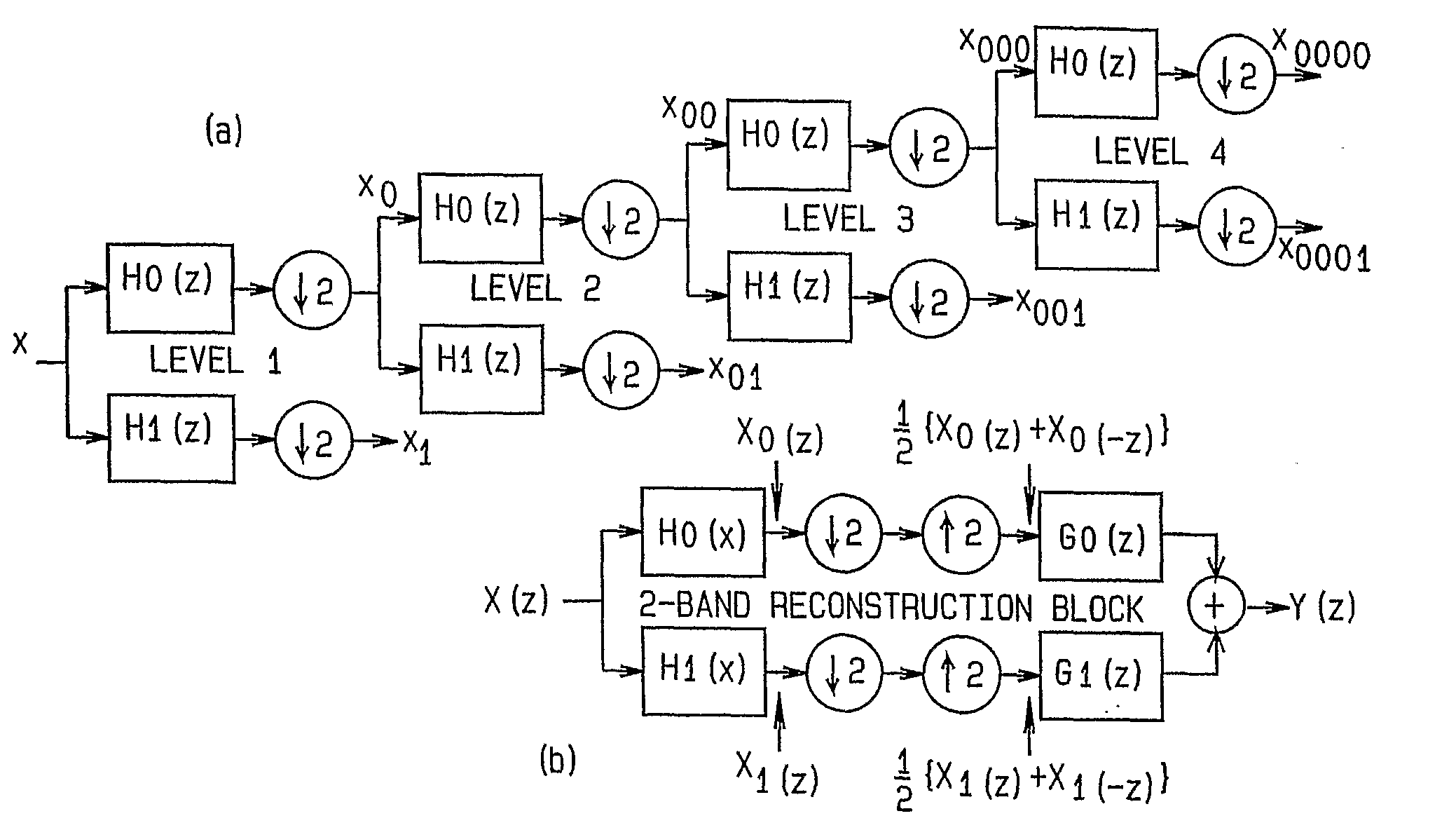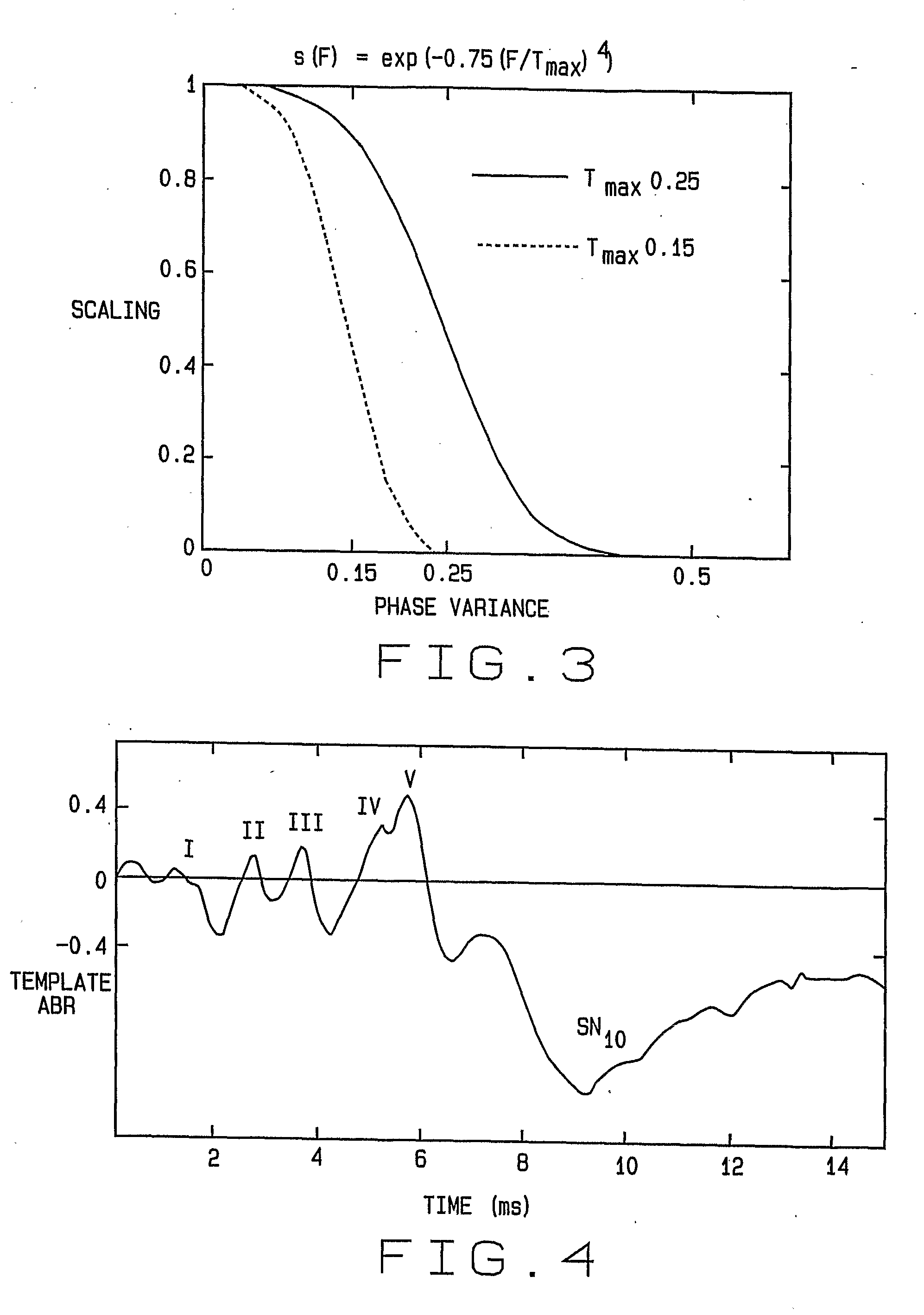Method for Adaptive Complex Wavelet Based Filtering of Eeg Signals
a complex wavelet and filtering technology, applied in the field of extracting or denoising auditory brains, can solve the problems of not being unable to shift-invariant in most practical forms, and distortion or obscuration of slow negative waves in the 10 ms region
- Summary
- Abstract
- Description
- Claims
- Application Information
AI Technical Summary
Benefits of technology
Problems solved by technology
Method used
Image
Examples
Embodiment Construction
[0025]The following detailed description illustrates the invention by way of example and not by way of limitation. The description clearly enables one skilled in the art to make and use the invention, describes several embodiments, adaptations, variations, alternatives, and uses of the invention, including what is presently believed to be the best mode of carrying out the invention.
[0026]The Complex Wavelet Transform (CWT) overcomes the shift-invariance deficiencies of the classing discrete wavelet transform, and has been successfully utilized for video image denoising applications. A CWT is based on a structure of low-pass filters and high-pass filters, each having complex coefficients to generate complex output samples. FIG. 1 illustrates four levels of a complex wavelet tree for a real one dimensional input signal x. The real and imaginary parts (r and j) of the inputs and outputs are shown separately. The energy of each CWT band is approximately constant at all levels, and is sh...
PUM
 Login to View More
Login to View More Abstract
Description
Claims
Application Information
 Login to View More
Login to View More - R&D
- Intellectual Property
- Life Sciences
- Materials
- Tech Scout
- Unparalleled Data Quality
- Higher Quality Content
- 60% Fewer Hallucinations
Browse by: Latest US Patents, China's latest patents, Technical Efficacy Thesaurus, Application Domain, Technology Topic, Popular Technical Reports.
© 2025 PatSnap. All rights reserved.Legal|Privacy policy|Modern Slavery Act Transparency Statement|Sitemap|About US| Contact US: help@patsnap.com



